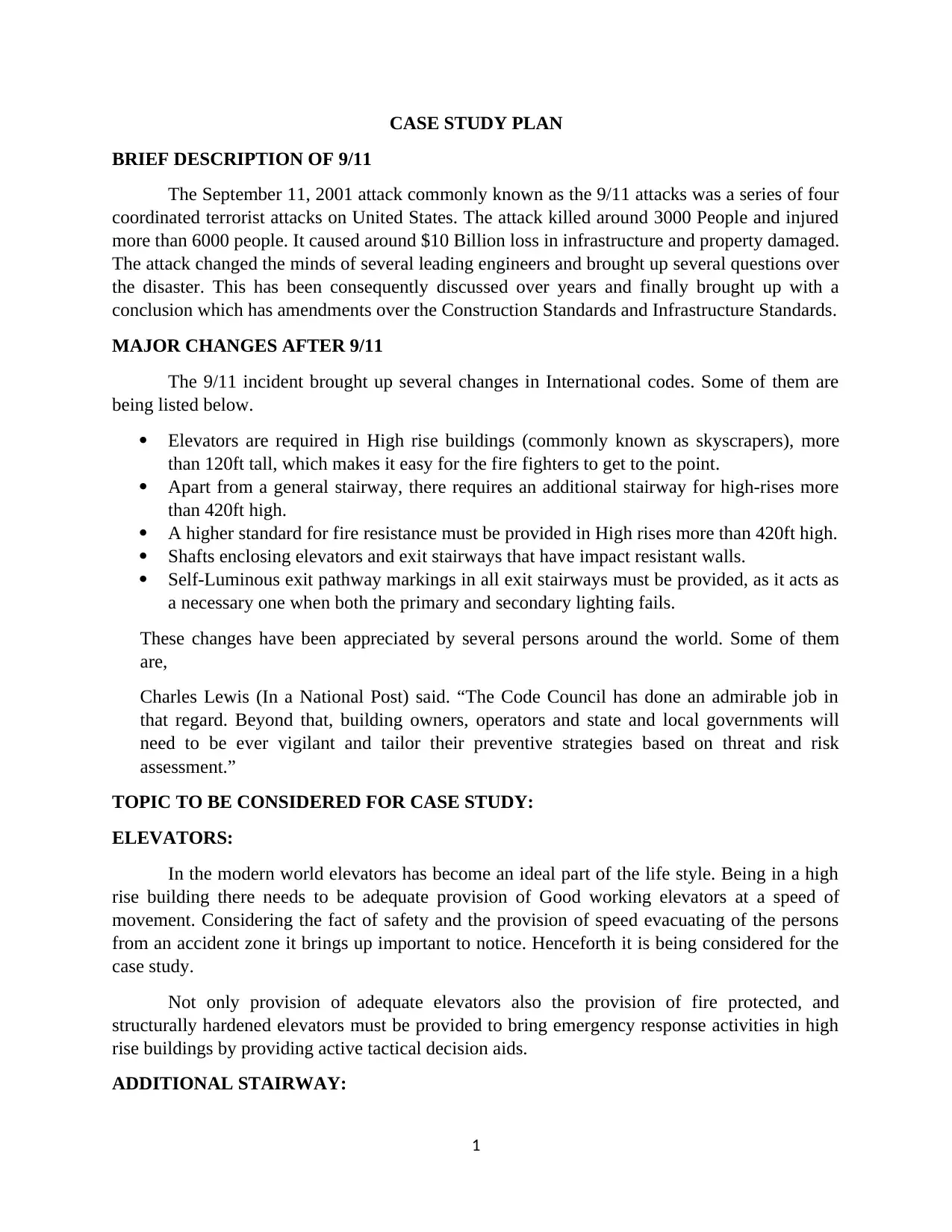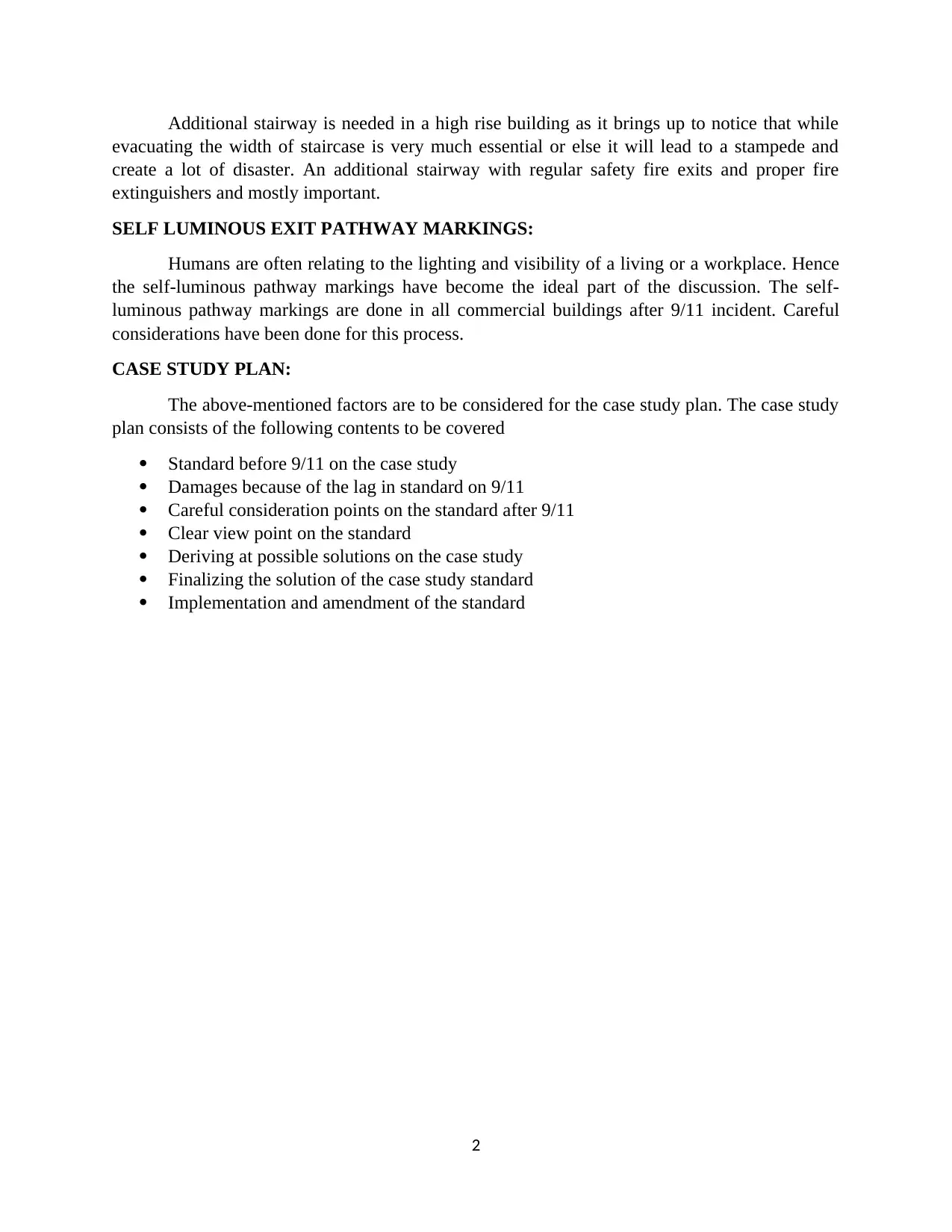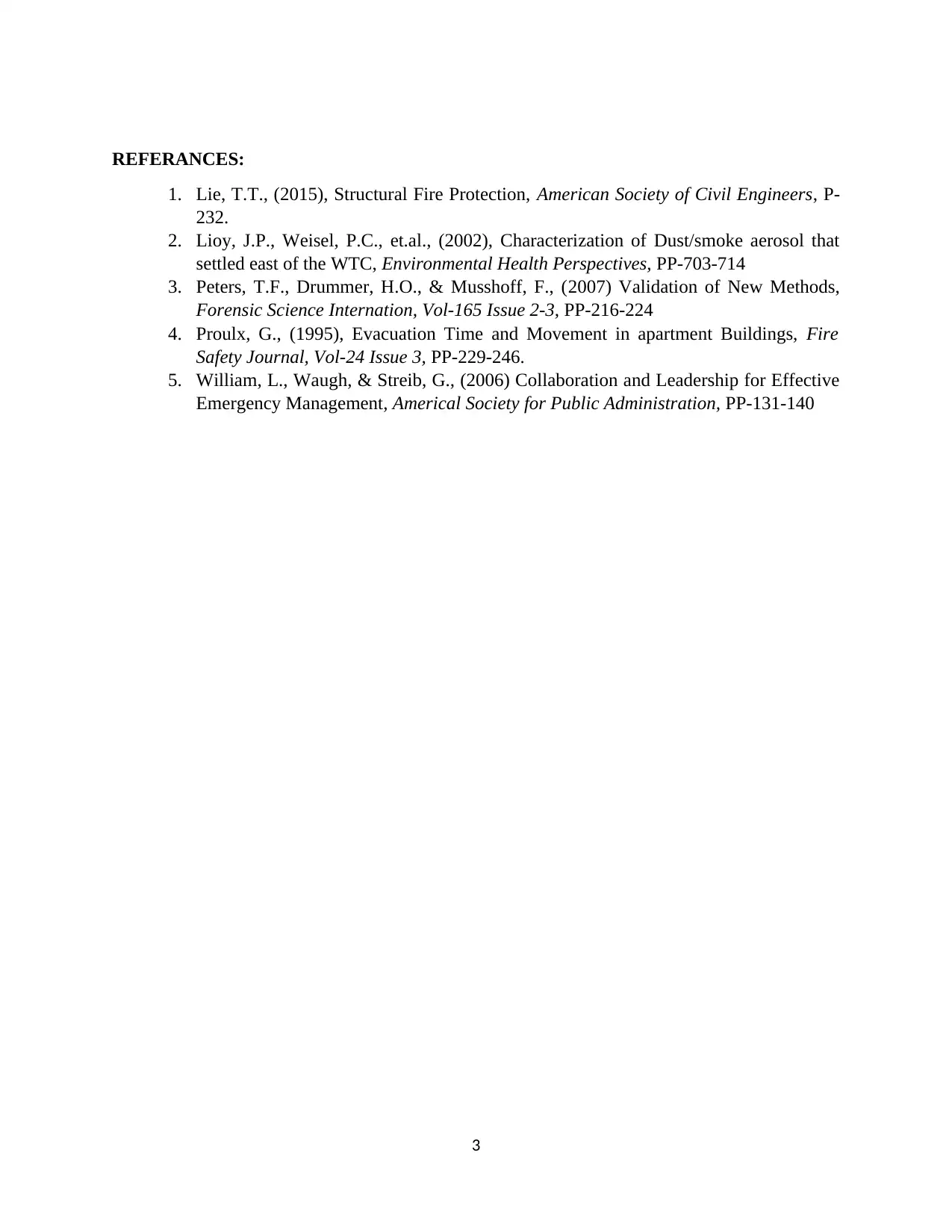Case Study: 9/11 Attacks, Building Standards, and Civil Engineering
VerifiedAdded on 2020/03/16
|3
|757
|314
Case Study
AI Summary
This case study examines the 9/11 attacks and their significant impact on building standards and civil engineering practices. The study begins with a brief overview of the attacks and the resulting loss of life and property damage, highlighting the need for a reevaluation of existing infrastructure standards. The core of the case study focuses on the major changes implemented in international codes following the incident, specifically addressing the importance of elevators, additional stairways, and self-luminous exit pathway markings in high-rise buildings. The plan for the case study includes an analysis of pre-9/11 standards, damages caused by the lag in those standards, careful consideration of post-9/11 standards, derivation of possible solutions, and finalization of implementation and amendment of standards. References to key literature on structural fire protection, forensic science, and emergency management are also included, providing a comprehensive overview of the subject matter. This case study aims to provide students with a detailed understanding of the evolution of building standards and the importance of safety and preparedness in civil engineering.
1 out of 3




![[object Object]](/_next/static/media/star-bottom.7253800d.svg)